What type of damage has this tree suffered that has made the bark separate? I suspect a lightning strike.
[Trees struck by lightning may exhibit variable symptoms. When lightning hits a tree, water in the cells beneath the bark is heated past the boiling point. The resulting steam causes an explosion that removes a strip of bark. A crack in the bark appears when a continuous groove of bark is stripped along the entire length of the trunk or main branch. A crack that does not run the length of the trunk may indicate a side flash. A side flash occurs when electricity strikes the tree, travels down the trunk, then jumps to an object with less electrical resistance. If lightning strikes a bit deeper, the entire tree may blow apart. The tree may or may not have blackened or charred areas on the trunk.]1
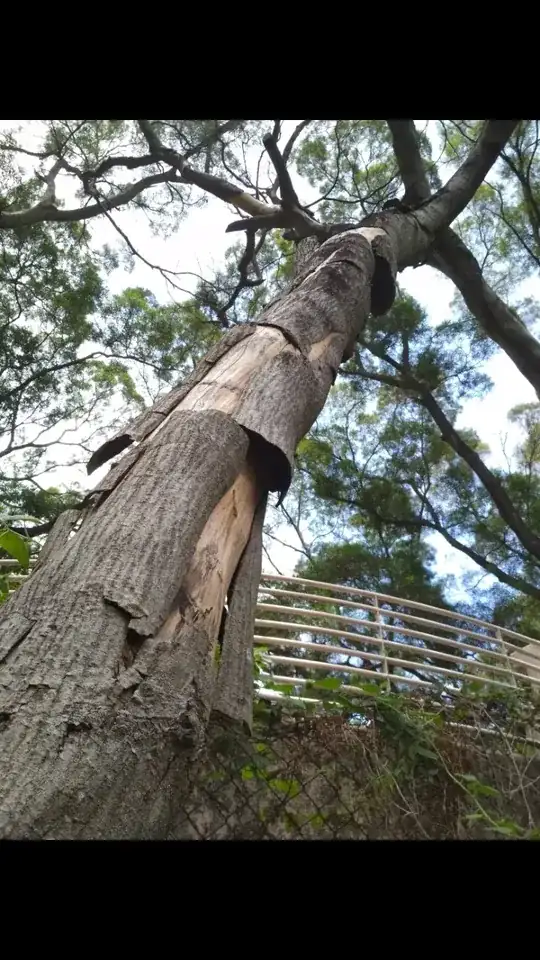
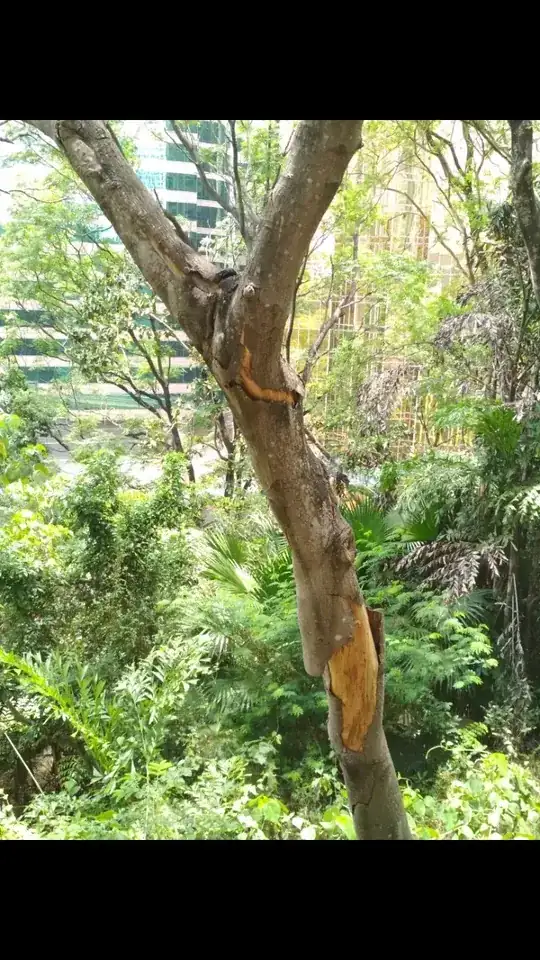 The blackness here looks like charring to me which - along with the winding lightning style patterns - makes me suspect exactly that.
The blackness here looks like charring to me which - along with the winding lightning style patterns - makes me suspect exactly that.
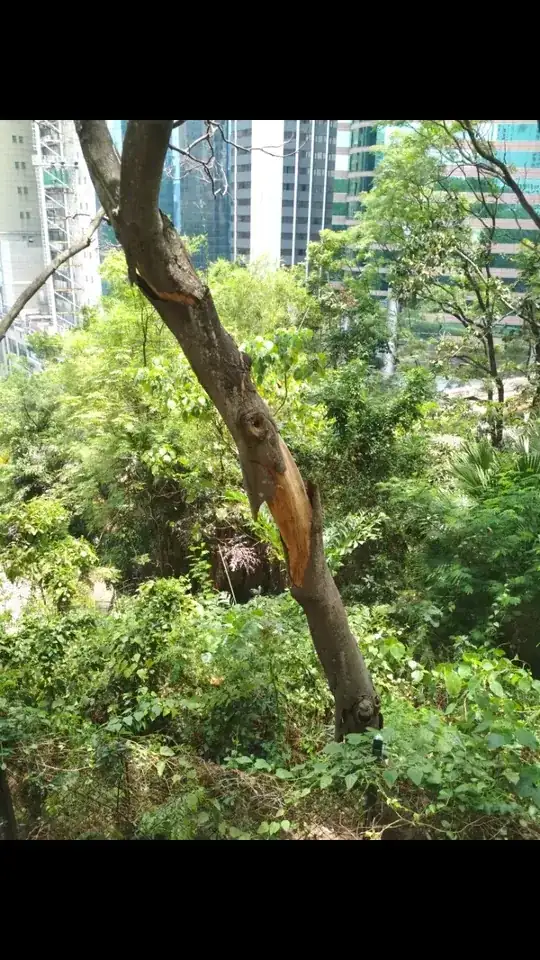
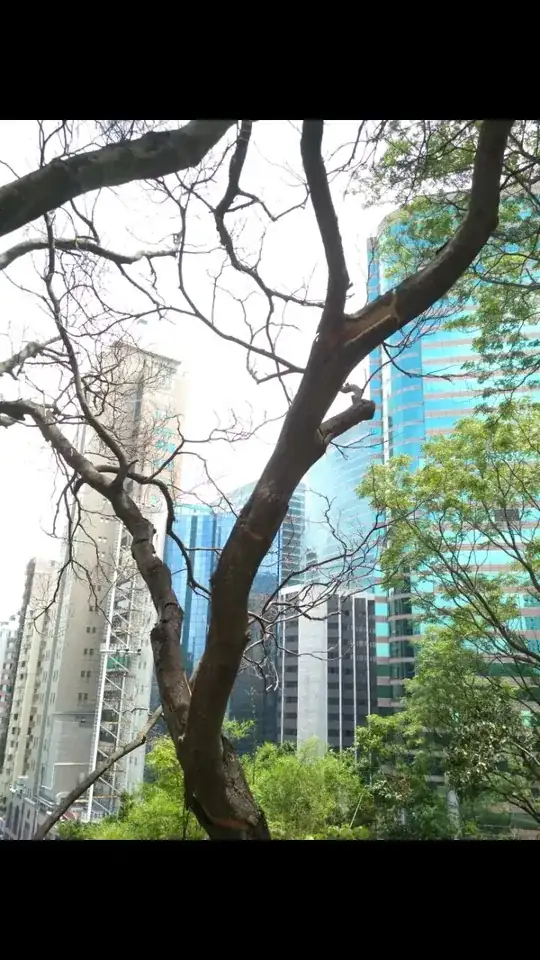
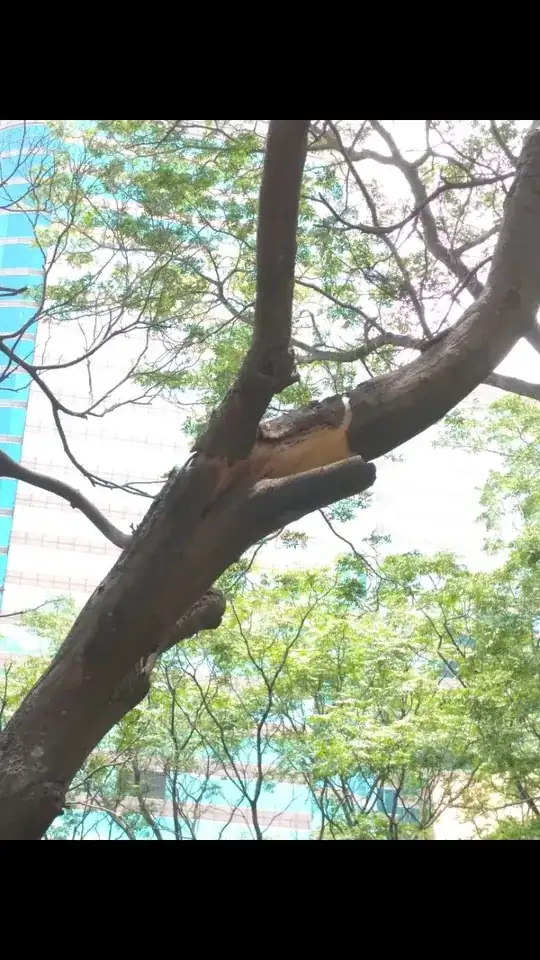
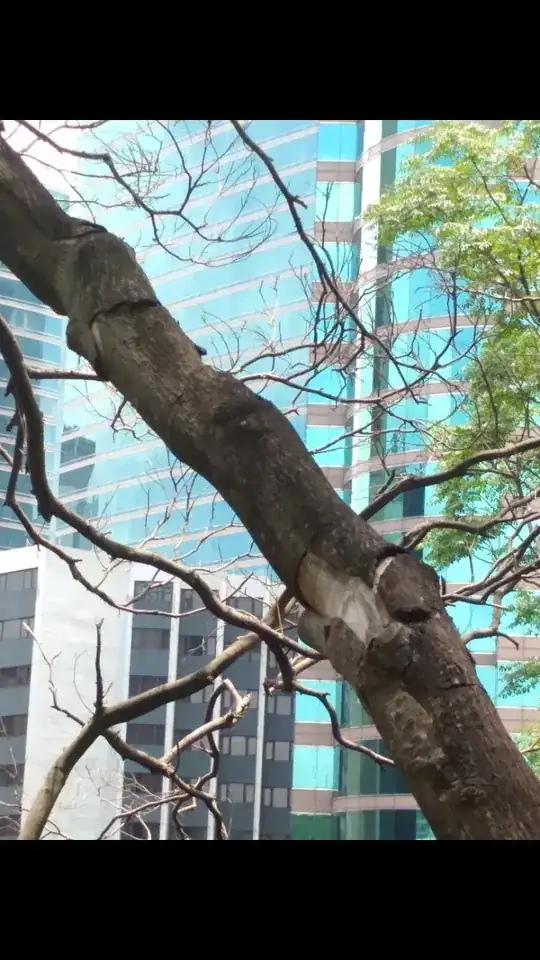
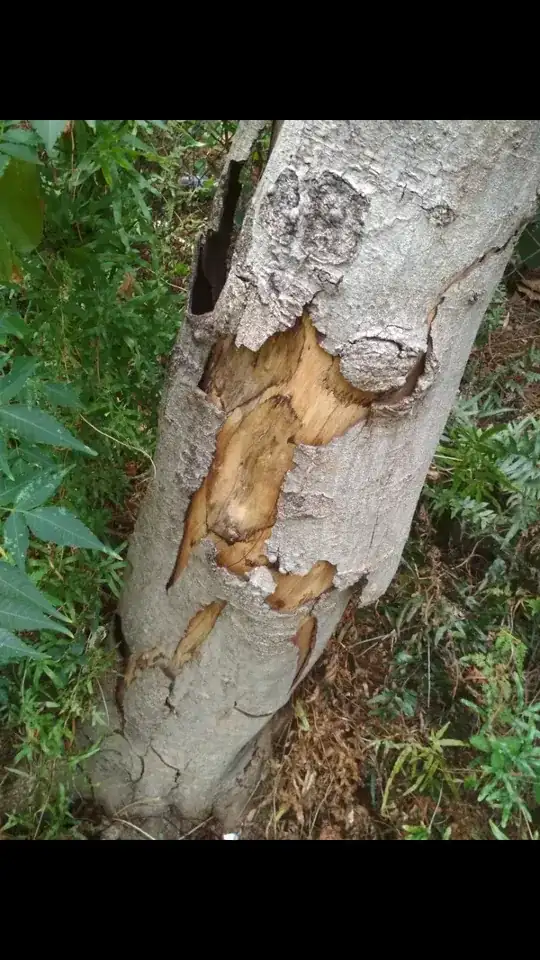
How can I determine exactly what has killed this tree?